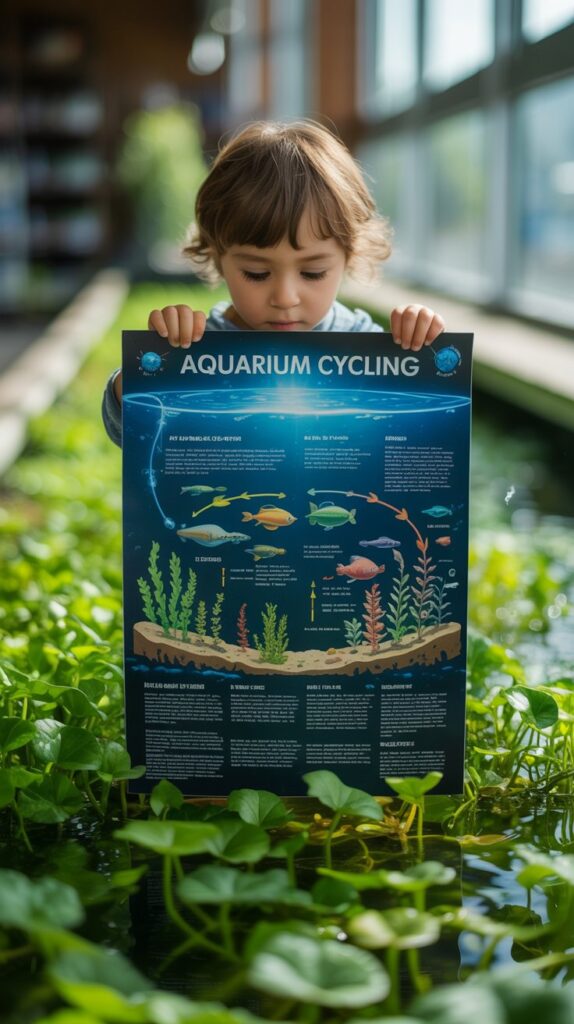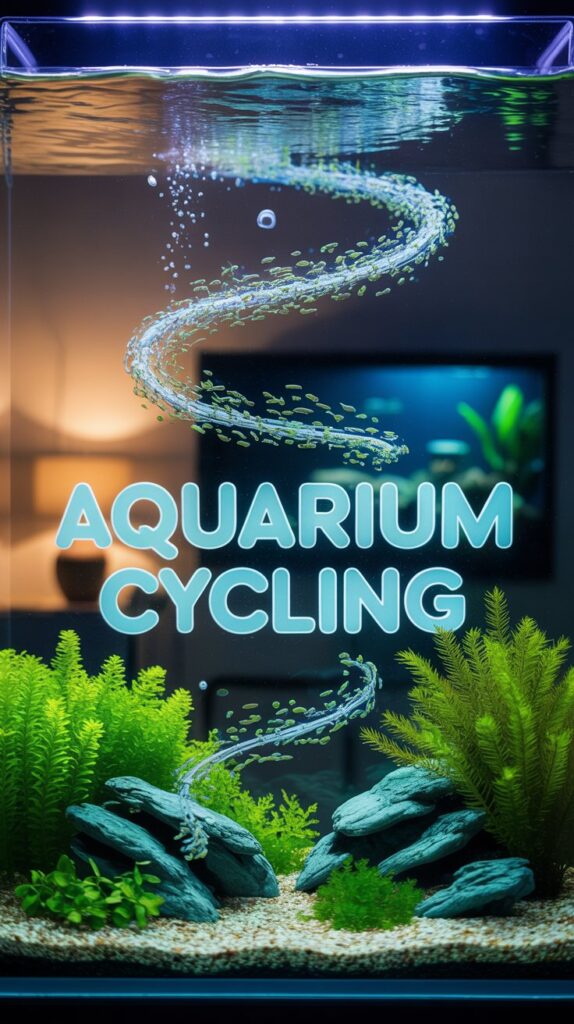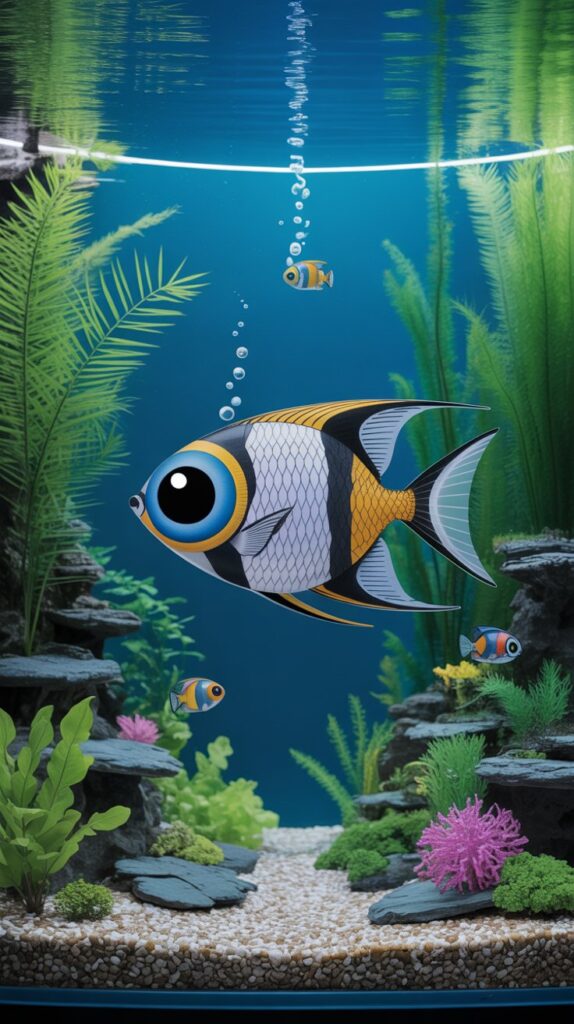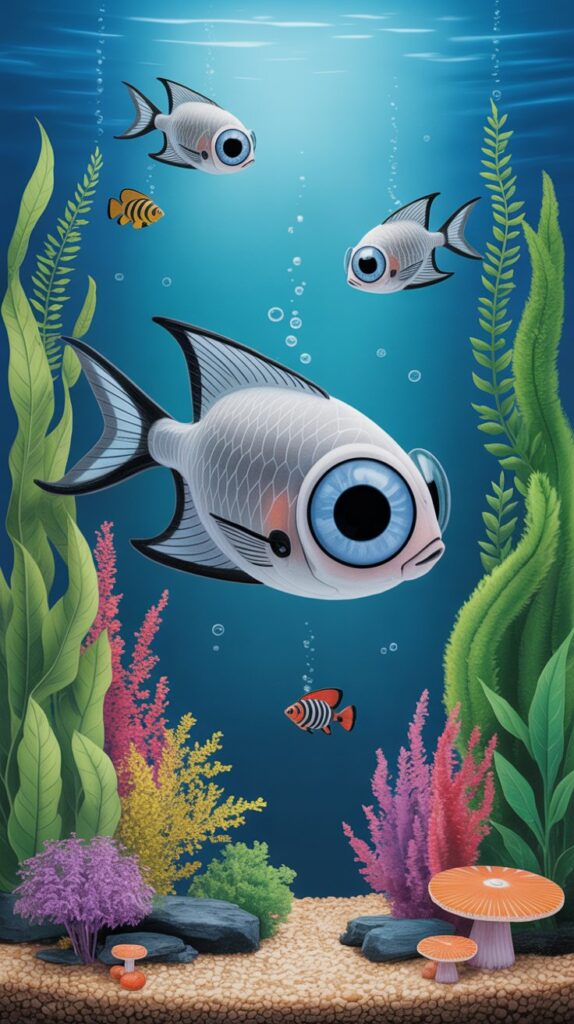Setting up an aquarium is exciting, but one of the most important steps that beginners often overlook is aquarium cycling. Without proper cycling, fish can quickly become stressed, sick, or even die due to toxic water conditions. Aquarium cycling is the process of establishing beneficial bacteria that break down waste products like ammonia and nitrite into safer compounds such as nitrate.
In this comprehensive guide, we’ll explore everything you need to know about aquarium cycling, why it’s important, how to cycle an aquarium properly, common mistakes to avoid, and advanced tips for ensuring a healthy, thriving tank.
What is Aquarium Cycling?
Aquarium cycling is the process of preparing your tank for aquatic life by establishing a biological filtration system. Fish produce waste, leftover food decays, and plants shed organic matter. All of this waste breaks down into ammonia, a toxic compound for fish.

Beneficial bacteria play a crucial role in the nitrogen cycle:
- Ammonia (NH₃) → Nitrite (NO₂⁻) – Ammonia is produced from fish waste and decomposing organic matter. Special bacteria (Nitrosomonas) convert it into nitrite.
- Nitrite (NO₂⁻) → Nitrate (NO₃⁻) – Nitrite is also harmful, but another group of bacteria (Nitrobacter) convert it into nitrate, which is far less toxic.
- Nitrate Removal – Nitrate can be managed through water changes, plants, or specialized filters.
This cycle makes water safe for fish and other aquatic creatures. Without it, toxins quickly build up, leading to fish loss.
Why is Aquarium Cycling Important?
- Protects Fish Health – Ammonia and nitrite poisoning can damage gills, weaken immune systems, and cause death.
- Creates a Stable Ecosystem – A cycled tank maintains balance, keeping fish and plants healthy.
- Prevents Frequent Water Changes – Once established, bacteria handle most of the waste, reducing maintenance.
- Supports Long-Term Success – Cycling lays the foundation for a sustainable aquarium.
Methods of Aquarium Cycling
There are several ways to cycle an aquarium. Choosing the right one depends on your patience, fish availability, and resources.
1. Fishless Cycling (Recommended)
This is the safest method because it avoids exposing fish to harmful toxins. Instead of adding fish, you use ammonia or decaying organic matter to feed the beneficial bacteria.
Steps:
- Set up the aquarium with substrate, filter, and heater.
- Add a source of ammonia (pure liquid ammonia or fish food).
- Test ammonia, nitrite, and nitrate regularly with a test kit.
- Wait until ammonia and nitrite drop to zero, and nitrate appears.
- Perform a water change before adding fish.
Timeframe: 4–6 weeks.
2. Fish-In Cycling

This method uses hardy fish to produce waste that fuels bacteria growth. However, fish are at risk from ammonia and nitrite during the process.
Steps:
- Add a small number of hardy fish (e.g., zebra danios, guppies).
- Feed lightly to reduce ammonia spikes.
- Perform frequent partial water changes.
- Monitor ammonia and nitrite closely.
Timeframe: 4–8 weeks.
3. Using Established Media
If you have access to an established aquarium, you can “seed” your new tank with beneficial bacteria from its filter media, gravel, or decorations.
Steps:
- Add filter sponges, gravel, or water from a cycled aquarium.
- Introduce ammonia (fish food or liquid).
- Monitor water parameters until stable.
Timeframe: 1–3 weeks.
4. Bottled Bacteria Products
Some commercial products contain live nitrifying bacteria that can speed up cycling. While effective, results vary.
Steps:
- Add bottled bacteria according to instructions.
- Provide ammonia to feed them.
- Test water regularly.
Timeframe: 1–2 weeks.
How to Tell if Your Aquarium is Cycled

Your aquarium is considered cycled when:
- Ammonia levels are 0 ppm
- Nitrite levels are 0 ppm
- Nitrate levels are 5–40 ppm
At this point, your beneficial bacteria colony is strong enough to handle fish waste.
Common Mistakes in Aquarium Cycling
- Adding Too Many Fish Too Soon – Overloading the tank overwhelms the bacteria.
- Overfeeding During Cycling – Excess food causes ammonia spikes.
- Skipping Water Testing – Without testing, you won’t know if cycling is complete.
- Cleaning Filters Too Early – This can remove the beneficial bacteria.
- Impatience – Rushing the process often leads to fish deaths.
Advanced Tips for Faster Aquarium Cycling
- Keep the water temperature around 77–86°F (25–30°C) to encourage bacterial growth.
- Use aeration (air stones) to provide oxygen for nitrifying bacteria.
- Add live plants to absorb nitrates and stabilize the ecosystem.
- Seed the tank with media from another cycled aquarium.
- Avoid chemicals that kill bacteria, such as certain medications or chlorine.
Aquarium Cycling for Different Setups
Freshwater Aquariums
- Easier to cycle than saltwater.
- Live plants help absorb ammonia and nitrates.
Saltwater Aquariums
- May require live rock or live sand to establish bacteria.
- Often takes longer to stabilize.
Planted Aquariums
- Plants consume ammonia and nitrates, helping balance the cycle.
- Still requires bacteria for stability.
Nano Aquariums
- Smaller tanks cycle faster but are more sensitive to water changes.
- Frequent testing is essential.
Troubleshooting Aquarium Cycling Problems

Problem 1: Ammonia Stays High
- Possible Cause: Too much food or fish.
- Solution: Do partial water changes, reduce feeding, and check filter performance.
Problem 2: Nitrite Spike Doesn’t Drop
- Possible Cause: Bacteria colony not fully established.
- Solution: Be patient, add bottled bacteria, or increase aeration.
Problem 3: No Nitrate Appearing
- Possible Cause: Cycle incomplete or test kit issue.
- Solution: Continue monitoring and ensure your test kit is accurate.
Long-Term Maintenance After Cycling
Once your tank is cycled, you must maintain it properly to keep fish healthy:
- Test water weekly.
- Perform regular water changes (20–30% weekly).
- Clean filters gently with tank water.
- Avoid overstocking.
- Continue using live plants for natural filtration.
Conclusion
Aquarium cycling is the foundation of a healthy, thriving aquarium. Whether you’re keeping goldfish, guppies, or a reef tank, understanding and completing the cycling process is critical for long-term success. By establishing beneficial bacteria, monitoring water parameters, and avoiding common mistakes, you’ll create a safe and stable environment for your aquatic pets.
Cycling requires patience, but it pays off with a balanced ecosystem where fish and plants can flourish. Think of it as building the foundation of your underwater world—once it’s stable, your aquarium will thrive for years to come.
FAQs About Aquarium Cycling
1. How long does aquarium cycling take?
Typically, 4–6 weeks, but it can be shorter with seeding or bottled bacteria.
2. Can I add fish during cycling?
Yes, but it’s risky (fish-in cycling). Fishless cycling is safer.
3. Do I need to cycle a planted aquarium?
Yes, even with plants, bacteria are essential for breaking down waste.
4. How do I speed up aquarium cycling?
Use established filter media, bottled bacteria, maintain warm temperatures, and ensure good aeration.
5. What happens if I don’t cycle my aquarium?
Fish may suffer from ammonia poisoning, stress, illness, and death.
6. Is cycling different for saltwater and freshwater?
Yes. Saltwater aquariums may require live rock/sand and take longer, while freshwater is simpler.
7. Can I cycle an aquarium without fish?
Yes, fishless cycling is the safest and most recommended method.
8. Why are nitrates still high after cycling?
Nitrates naturally accumulate. Regular water changes and plants help control them.

